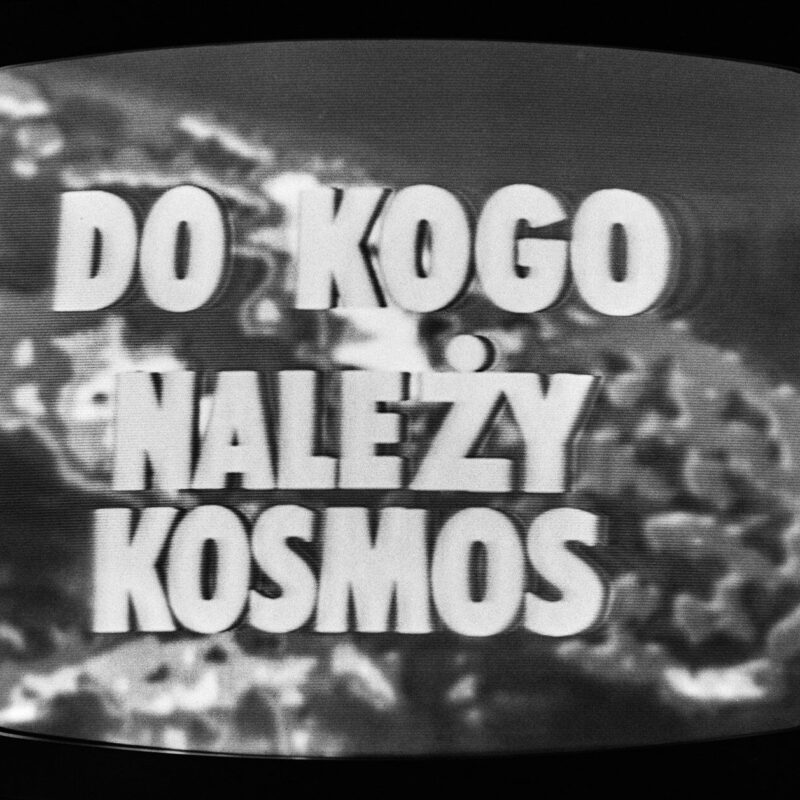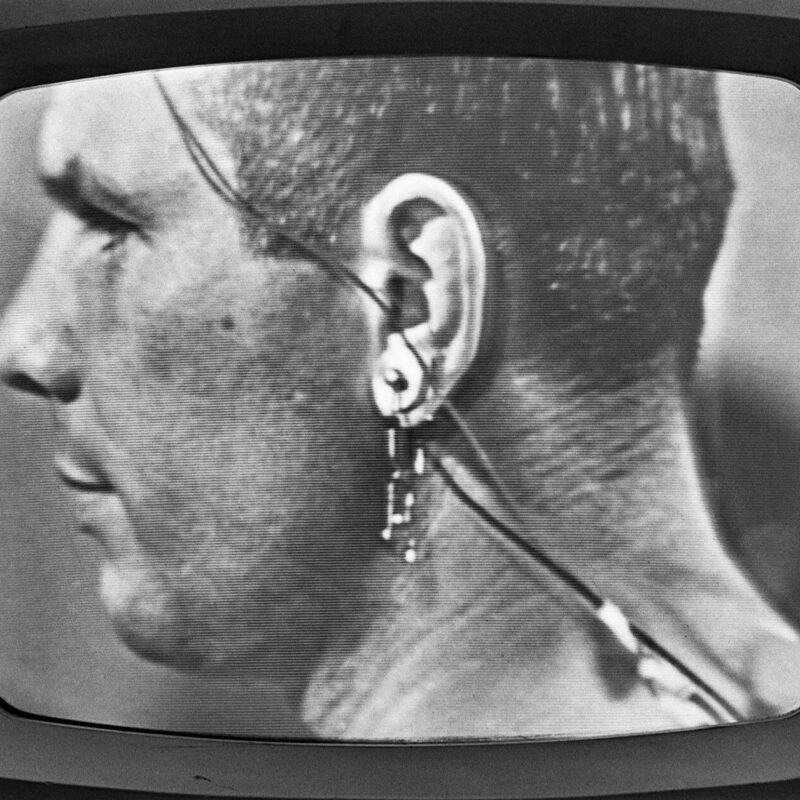Zygmunt Rytka, To Whom Does the Cosmos Belong?
Curator: Karol Hordziej
Place:
Former Cracovia Hotel
Branch of the National Museum in Krakow
al. Focha 1
Exhibition open:
26.06. - 26.07.2020
Thu-Fri 3 pm-7 pm
Sat-Sun 11 am-7 pm
Tickets:
Free admission
To Whom Does the Cosmos Belong? is the first exhibition of the works of Zygmunt Rytka to have been realised by utilising the late artist’s digitised archive. The structural starting point for the exhibition is the Photovision series, the main part of which was created between 1978–1983. This was a period spanning the end of the Gierek era, with its attempts at creating a socialist consumer society; subsequent strikes and the struggle for the legalisation of the Solidarity labour movement; and the declaration and imposition of martial law in Poland, accompanied by increasing propaganda and manipulation of mass media through information channels controlled by the regime. During this time, Rytka embarked on a project oriented around photographing his television screen. He took more than 5,000 pictures from this vantage, the majority of which have never been published. These photographs capture not only the political and cultural climate of Poland in the late 1970s and early 1980s, but they also transcend literality, forming a stream of unsettling images, as if unspooling from the collective consciousness of modern society.
.
Other works on display also relate to the interplay between government and society within the context of media, propaganda, and manipulation. Among them is a little-known series of photographs titled 1981, depicting individuals reading newspapers carrying bulletins from Communist Party meetings. We do not see the readers’ faces—instead only their hands, cigarettes, silhouettes, coats, and hats. It is these human contours that form a frame for the propagandistic content carried by the newspapers. The exhibition also includes a fragment of Rytka’s film and video work. Fiat 126p, from 1976, is a satirical film in which the artist portrays the ‘Toddler,’ as the iconic car was nicknamed in Poland, as a fetishistic object of sexual desire. Retransmission, a filmic collage assembled in video format in 1988, is a record of the period’s zeitgeist, and of the rhetoric and iconography of government-controlled mass media during the Polish People’s Republic, with the artist’s commentary.
.
The exhibition’s eponymous question, adopted from one of Rytka’s Photovision frames, can be heard as a call to independently gather and process information; to take the camera into one’s own hands. At the same time, the images in the cycle’s archive channel contemporary anxieties about the future of humanity. At a time when we are increasingly confronted with apocalyptic scenarios, it becomes necessary to ask, ‘Does the cosmos, and our life itself, belong to us?’
.
Zygmunt Rytka (1947–2018) was an intermedia artist associated with the Polish neo-avant-garde movement of the 1970s, and later with the milieu of independent art in the 1980s. He was the author of photographic series, experimental films, and video works, as well as, after 2000, installations and objects. The late artist’s archive is currently being developed by the Foundation for Visual Arts in Krakow and the Sokołowsko In Situ Contemporary Art Foundation. The results of this ongoing work on the Rytka archive can be seen at zygmuntrytka.pl/en.
.
Karol Hordziej is a curator, cultural manager, and lecturer. He initiated and co-created digital archives of the works of Zofia Rydet, Wojciech Plewiński, and Zygmunt Rytka. Editor of the monographs Jerzy Kolecki’s Puppet Theatre (2018) and Jan Dziaczkowski: Collages (2013), he has also curated exhibitions including Jerzy Kolecki’s Puppet Theatre (BWA Tarnów, 2017), Jan Dziaczkowski: True and Untrue Stories (Zachęta National Gallery of Art, 2015), and Zofia Rydet: Record, 1978–1990 (Museum of Modern Art in Warsaw, 2015). From 2004–2013 he was the artistic director of the Krakow Photomonth Festival.
.
Exhibition Partner: In Situ Contemporary Art Foundation
.
IMPORTANT INFORMATION! Due to sanitary restrictions max 10 people are allowed to stay in the exhibition space, addition to the curator (+ 2 on the entresol).
.
.
.





